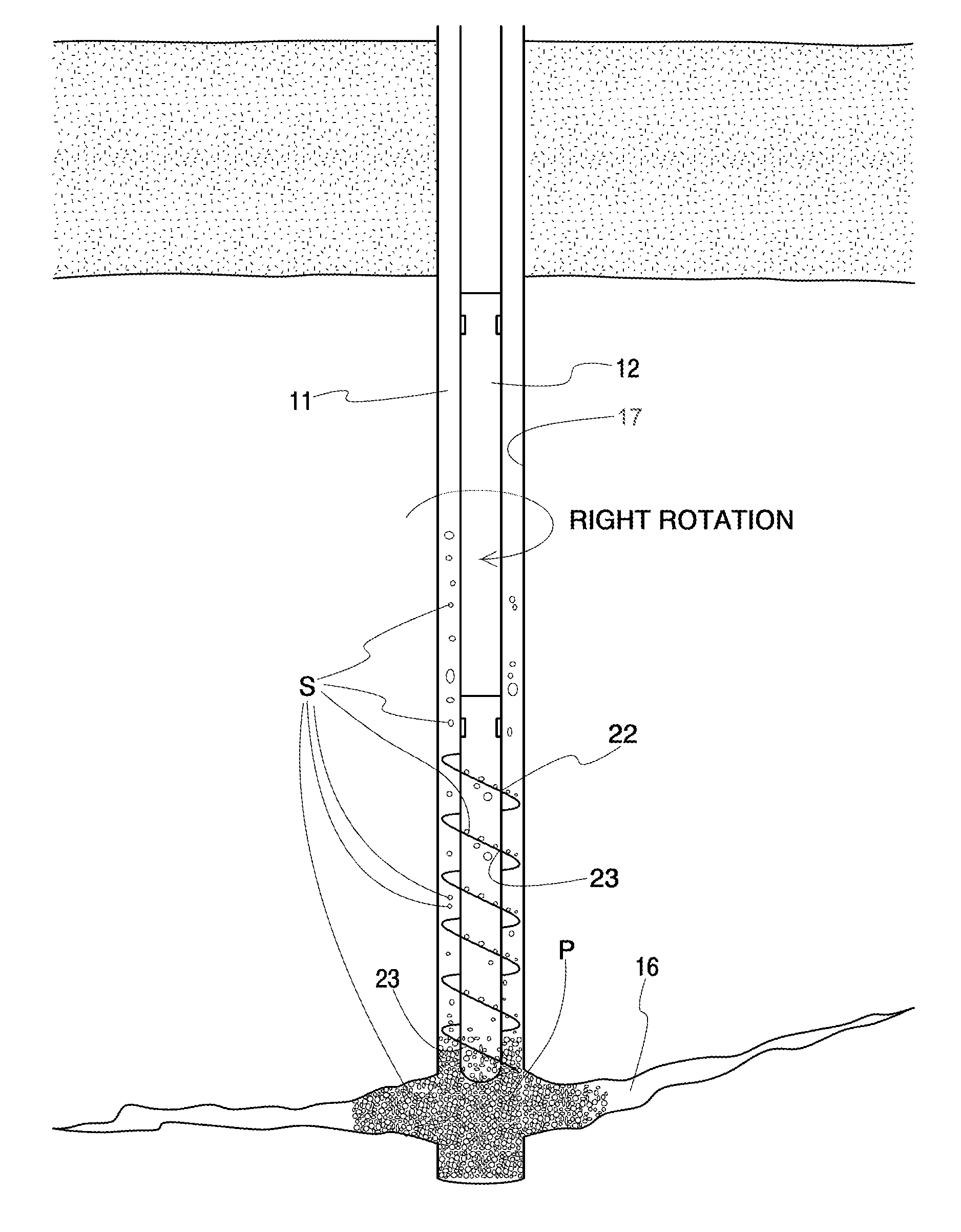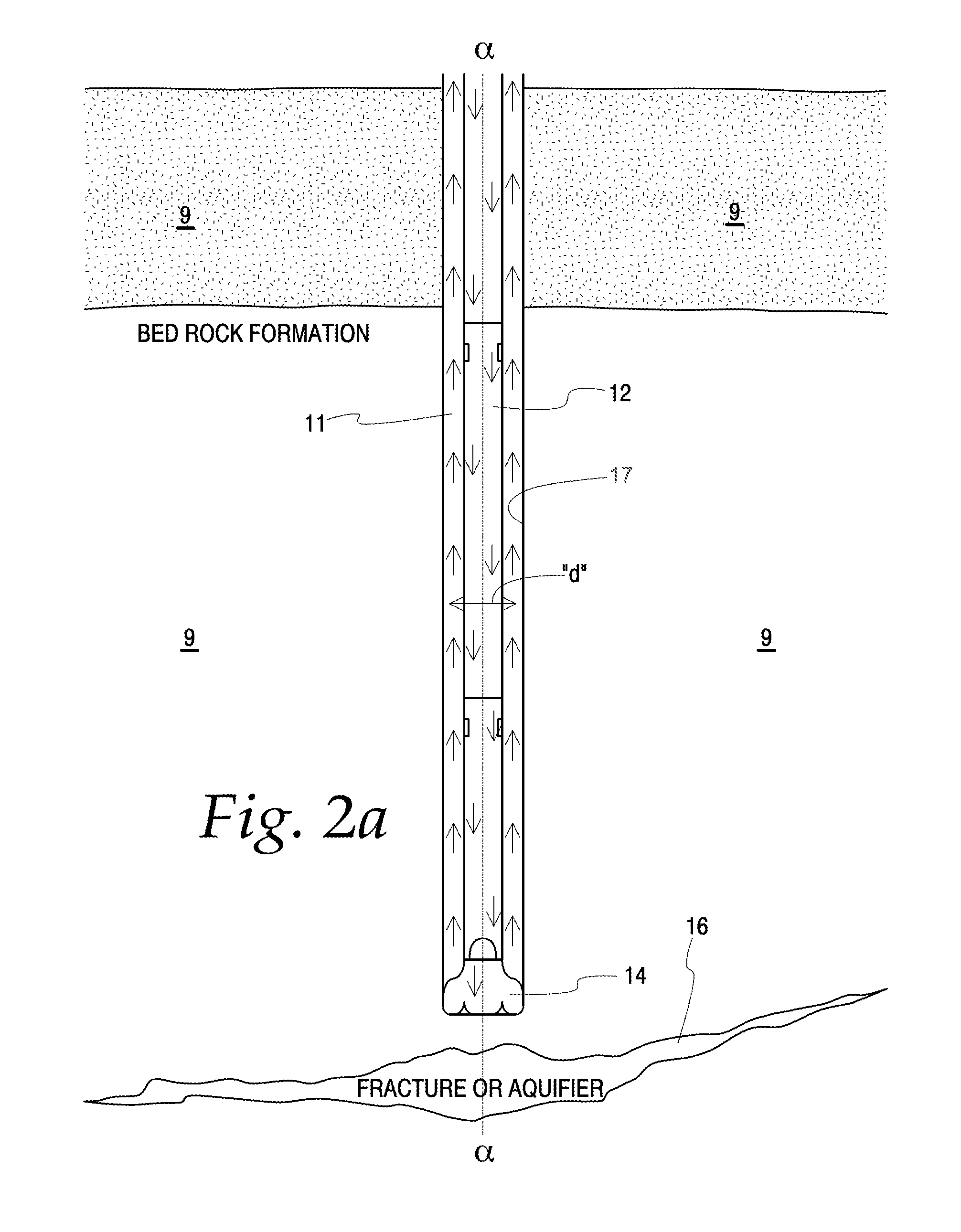Method for repairing aberrations along a drill bore wall
a drilling hole and aberration technology, applied in the field of geothermal energy, can solve the problems of loss of loop's ability to transfer a considerable percentage of energy, difficulty in environmental containment of the drill site with air rotary drilling, and loss of thermal conductance from the earth to the loop, so as to minimize vibration of drilling equipment, increase depth, and therefore capacity
- Summary
- Abstract
- Description
- Claims
- Application Information
AI Technical Summary
Benefits of technology
Problems solved by technology
Method used
Image
Examples
example
[0149]FIGS. 3A and 3B are caliper logs depicting a location where fractured formation and lost circulation zones are an issue. The logs depict fracture zones at depths of 195 feet, 250 feet and 375 feet. These two holes were drilled 100 feet from each other, on the same day.
[0150]FIG. 3A is a caliper log for a hole drilled using conventional drilling techniques. From a 180 foot depth, a mud rotary was switched to air rotary due to the driller encountering the fractured formation. Caliper deviations (i.e., washout) seen on that graph are concomitant with lost circulation.
[0151]FIG. 3B is a caliper log for a hole drilled approximately 100 feet away using the invented technique. When the invented reverse auger process was applied at the first instance of mud pressure drop, the fractures sealed, or at least were greatly minimized. The reverse auger method was used in this drilling at between 180 and 260 feet. Upon repair of the fractures, the mud circulation was reestablished. Unlike th...
PUM
 Login to View More
Login to View More Abstract
Description
Claims
Application Information
 Login to View More
Login to View More - R&D
- Intellectual Property
- Life Sciences
- Materials
- Tech Scout
- Unparalleled Data Quality
- Higher Quality Content
- 60% Fewer Hallucinations
Browse by: Latest US Patents, China's latest patents, Technical Efficacy Thesaurus, Application Domain, Technology Topic, Popular Technical Reports.
© 2025 PatSnap. All rights reserved.Legal|Privacy policy|Modern Slavery Act Transparency Statement|Sitemap|About US| Contact US: help@patsnap.com



